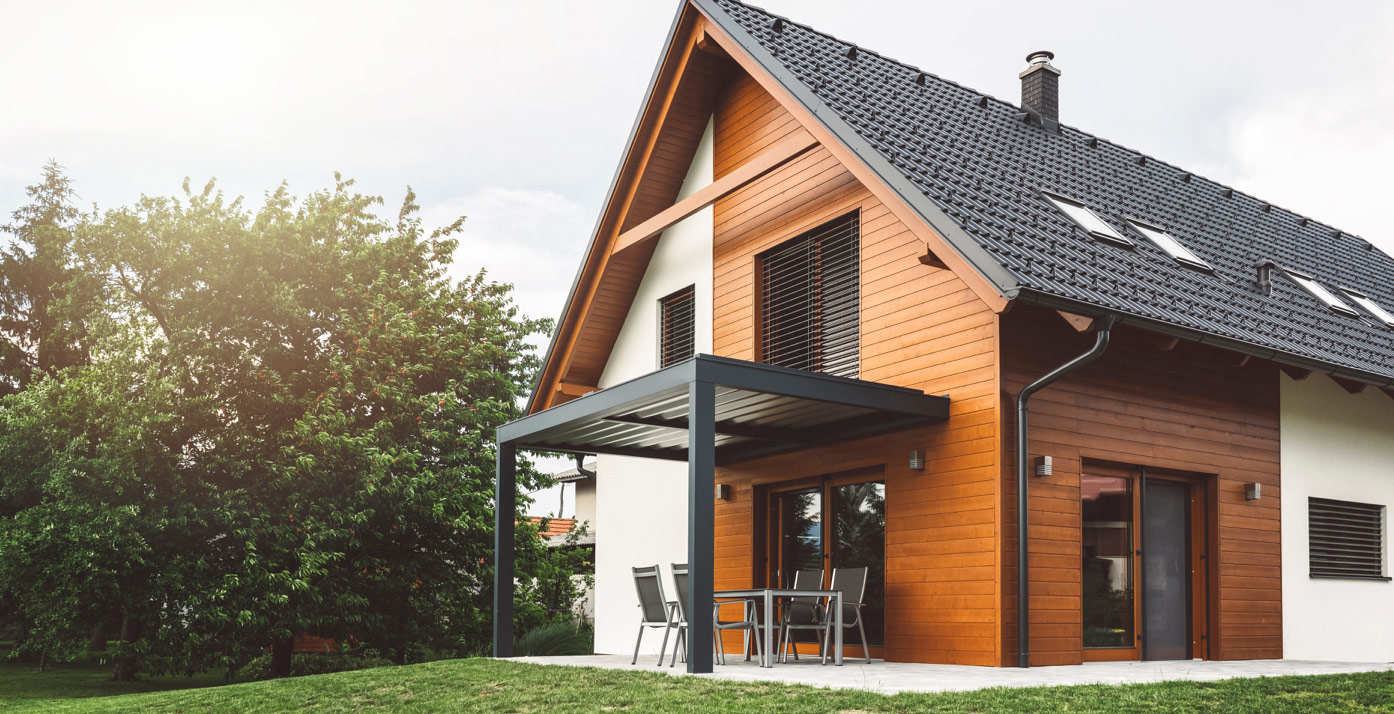This website uses cookies so that we can provide you with the best user experience possible. Cookie information is stored in your browser and performs functions such as recognizing you when you return to our website and helping our team to understand which sections of the website are the most popular and useful.
Choosing Sides: The Best Siding Materials for a Home

Ready to talk to an expert?
For an average investment of about $10,000, you will increase your curb appeal, add durability, and can even lower your heating bills due to improved insulation.
Siding replacement consistently ranks as one of the best remodeling projects for retaining resale value; for example, you’ll recoup 87% of your cost at sale time if you replace your siding with trendy fiber cement.
There are 3 three things to consider when you’re deciding on a new material for your home’s exterior: durability, energy efficiency, and aesthetics. Here are the pros and cons of some of the most popular types of siding.
Vinyl
Vinyl can often be installed over existing materials, so it’s a good choice to update preexisting homes. It’s inexpensive and comes in a wide variety of colors and textures. It’s also popular among homeowners because it is scratch-resistant and durable, and is easy to clean and install.
Once you get it installed, it is low-maintenance, and doesn’t need repainting. Companies are now offering foam-backed vinyl, which provides better insulation. Remodeling Magazine’s 2014 Cost vs. Value Report finds that replacing your siding with foam-backed vinyl is one of the top 3 upscale remodeling projects, with approximately 78% of costs recouped at resale.
Wood
Wood siding looks beautiful, but you need to be prepared for regular maintenance. Whether you use a clear finish, semi-transparent stain, or paint, you’ll have to reapply at least every 5 years.
Prices vary widely depending on the grade of wood you use, and any existing siding will need to be removed before you can retrofit. Wood siding is versatile, and styles include clapboard, shingles, and board and batten.
Natural wood siding is not as common as it used to be because it’s a poor insulator and is prone to insect and weather damage. If you’re committed to the beauty of a wooden exterior, engineered wood is a durable alternative and is about half the cost of real wood siding.
Fiber Cement
Fiber cement is becoming much more popular, and it is the best project to boost your home value.
Made from a mix of sand, clay, cement, and cellulose (wood pulp), it can be molded to look like stucco, masonry, clapboard, shingles, or horizontal lap siding, and accommodates almost any style of home.
Fiber cement is very durable and won’t expand or contract with changes in temperature. Manufacturer warranties may last as long as 50 years, with 15-year warranties on the finish. It’s low maintenance and can be painted any color.
The downsides? Fiber cement is a relatively new material, and is complicated to install. It may be tough to find a contractor with the necessary experience and tools. You’ll also need to completely remove the old siding for a retrofit, which adds to the cost.
Stone
Stone siding is among the most durable and requires little maintenance. Unlike other types of siding, stone doesn’t degrade over time—it will look just as attractive after 30 years as it did the day it was installed.
Unfortunately, stone is difficult to install and is one of the most expensive siding materials. However, synthetic stone is easier to work with and could even be a project for advanced DIYers. It’s still more expensive than other options, so consider using it as an accent to cover a chimney or the lower part of a wall.
Brick
Brick is beautiful, and there’s no doubt it’s durable. Installation requires masonry, which can deteriorate at mortar joints, so it does need some upkeep.
Because it is usually a veneer rather than structural, brick needs to be tied back to the building structure to prevent movement due to weather conditions. It’s a good insulator and comes in several colors. Brick generally requires professional insulation, and the cost of labor and materials make it one of the more expensive choices for siding.
***
The kind of siding you select will depend on several factors, and your budget may determine your options. Just remember that updating the siding on your home is something you will probably only have to do once, so it can be worth the extra money to get what you like.
With proper maintenance, almost all types of siding will hold up in any weather condition. Consider how much time and effort you’re willing to put into upkeep, and talk to other homeowners in your area to see what their experiences have been. New siding can completely change the look of a home, so make sure it’s done right!





